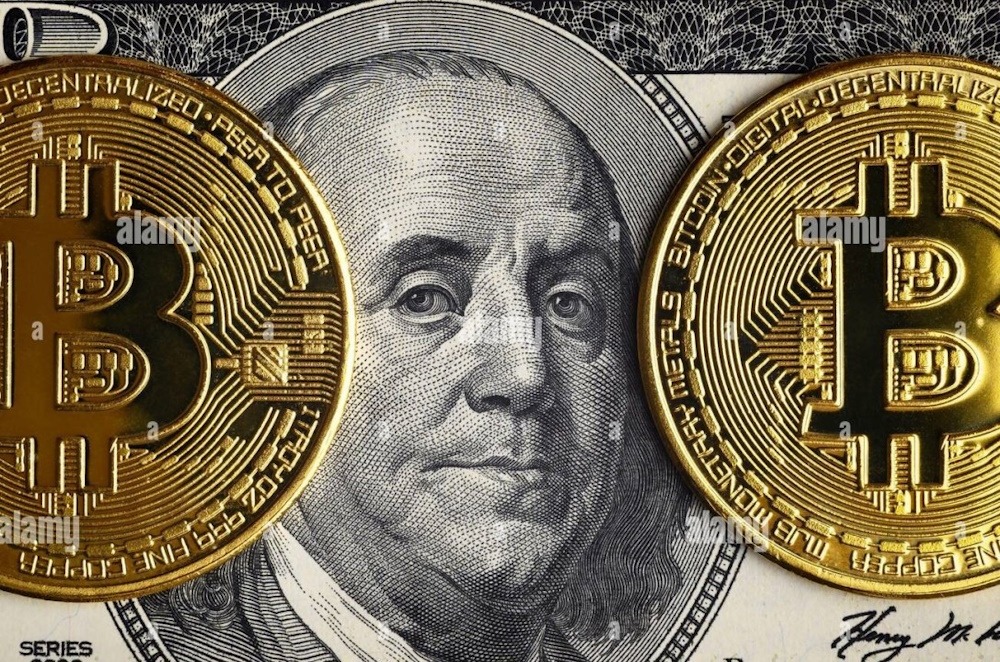Lyn Alden, a prominent macroeconomic strategist and financial analyst, addressed the audience at the Bitcoin 2025 conference with a grave caution: the US fiscal deficit has transcended mere concern; it has become an inexorable reality. Alden’s address focused on the escalating structural challenges facing the US economy, notably the government’s unchecked expenditure, and the unavoidable repercussions this will have on asset valuations, particularly for limited resources such as Bitcoin. “Nothing stops this train,” Alden stated, emphasizing the gravity of the circumstances. She elaborated on the phenomenon where US fiscal deficits and unemployment rates, which historically exhibited a correlated movement, have started to diverge in recent years. “Over the past several years, ever since 2017, we’ve seen a decoupling.” Unemployment rates have decreased, however, the federal deficit has surged to 6-7% of GDP. Alden contends that this shift indicates a new fiscal reality that has become irreversible.
Alden’s analysis underscored that this trend has been intensified by the pandemic, yet it was already underway well before that point. She highlighted historical data, noting that in most past periods, an increase in unemployment was accompanied by rising federal deficits; however, this trend has now shifted. “This is a new era,” Alden stated. “The decoupling of the deficit from unemployment is something that hasn’t been seen for decades.” The ramifications of this fiscal decoupling are considerable for investors, especially for those aiming to safeguard their portfolios against the diminishing purchasing power induced by inflation. Alden shifted her focus to the wider asset landscape, illustrating the responses of gold and Bitcoin to the changing economic environment. She presented a chart that juxtaposed gold prices with real interest rates, highlighting a significant historical correlation between the two variables.
“Gold and Bitcoin are the two primary reserve assets that compete with each other at that scale,” Alden explained. “When real interest rates are high, investors are enticed to return to the dollar and treasury system. However, when those rates fail to outstrip inflation, gold and Bitcoin emerge as attractive alternatives. Alden observed that since 2022, the relationship between gold prices and real rates has deteriorated, a situation that adds complexity to the economic environment. “We’ve entered a new environment where both gold and Bitcoin have continued to rise despite rising interest rates,” she noted, emphasizing the increasing separation between conventional financial assets and alternative assets such as Bitcoin. “If you’d asked anyone five years ago whether Bitcoin could hold its ground with interest rates at 4-5%, most would have said no. Yet, here we find ourselves, with Bitcoin valued at over $100,000 per coin.”
For Alden, this shift is not simply a matter of theory; it serves as evidence of a more profound and established fiscal dynamic. She contended that as US government debt approaches unsustainable thresholds, conventional approaches to managing inflation, like increasing interest rates, have lost their efficacy. “When they raise interest rates, they ironically increase the federal deficit at a faster pace than they slow down private sector credit growth,” she explained. “The problem is that we no longer have the brakes attached to the system.” The fiscal train is advancing at full throttle, and there are no mechanisms established to decelerate its momentum.” Alden also examined the limitations of the Fed’s interest rate policies in managing credit growth amid escalating government debt levels. “In the past, when federal debt was low, raising interest rates could effectively slow down credit growth.” However, with federal debt exceeding 100% of GDP, each increase in rates merely exacerbates the deficit. This, she contended, exemplifies the inherent fragility of the existing framework—one in which the government is compelled to perpetually escalate its debt, given the absence of a feasible method to alleviate the fiscal strain.
Alden positioned Bitcoin as the definitive safeguard against these inflationary pressures, standing in stark contrast to the US fiscal system. “Bitcoin is the opposite of this system,” she noted. “Unlike the US dollar, which is constantly being debased by inflationary policies, Bitcoin is an asset defined by absolute scarcity.” It is not possible to generate additional quantities of it. “And that scarcity is what makes Bitcoin an attractive store of value in an era of fiat instability.” Alden also articulated the argument for Bitcoin’s increasing significance in a landscape where conventional financial systems are struggling. “The rules that governed the economy for the past century no longer work,” she stated. “We’ve gone through the looking glass.” We find ourselves in a novel epoch where the fiscal train is unstoppable. However, Bitcoin, characterized by its transparent ledger and fixed supply, distinguishes itself as an asset that cannot be manipulated or inflated away.
In conclusion, Alden cautioned that the fiscal trajectory of the US is poised for the long haul. “For the next decade, we will be running very large fiscal deficits in the US, almost regardless of what else happens,” she said. “Nothing can meaningfully decelerate this trend.” To safeguard oneself, one must possess the most superior quality of scarce assets. “And Bitcoin is at the top of that list.”

